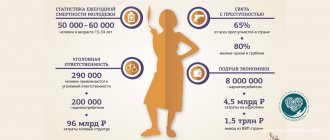ST 229.1 of the Criminal Code of the Russian Federation . Smuggling of narcotic drugs, psychotropic substances, their precursors or analogues, plants containing narcotic drugs, psychotropic substances or their precursors, or their parts containing narcotic drugs, psychotropic substances or their precursors, tools or equipment under special control and used for the manufacture narcotic drugs or psychotropic substances
1. Illegal movement across the customs border of the Customs Union within the EurAsEC or the State border of the Russian Federation with member states of the Customs Union within the EurAsEC of narcotic drugs, psychotropic substances, their precursors or analogues, plants containing narcotic drugs, psychotropic substances or their precursors, or their parts containing narcotic drugs, psychotropic substances or their precursors, instruments or equipment that are under special control and used for the manufacture of narcotic drugs or psychotropic substances - is punishable by imprisonment for a term of three to seven years with a fine of up to one million rubles or in the amount of wages or other income of the convicted person for a period of up to five years or without it and with or without restriction of freedom for a period of up to one year.
2. The same act committed: a) by a group of persons by prior conspiracy; b) by an official using his official position; c) in relation to narcotic drugs, psychotropic substances or their analogues, plants containing narcotic drugs, psychotropic substances, or their parts containing narcotic drugs or psychotropic substances in a significant amount - shall be punished by imprisonment for a term of five to ten years with a fine in the amount of up to one million rubles or in the amount of wages or other income of the convicted person for a period of up to five years or without it and with or without restriction of freedom for a period of up to one and a half years.
3. Acts provided for in parts one or two of this article, committed in relation to narcotic drugs, psychotropic substances, their precursors or analogues, plants containing narcotic drugs, psychotropic substances or their precursors, or their parts containing narcotic drugs, psychotropic substances or their precursors, in a large amount - shall be punishable by imprisonment for a term of ten to twenty years with a fine in the amount of up to one million rubles or in the amount of the wages or other income of the convicted person for a period of up to five years or without it, and with restriction of freedom for a term of up to two years or without it.
4. Acts provided for in parts one, two or three of this article, committed: a) by an organized group; b) in relation to narcotic drugs, psychotropic substances, their precursors or analogues, plants containing narcotic drugs, psychotropic substances or their precursors, or their parts containing narcotic drugs, psychotropic substances or their precursors, in an especially large amount; c) with the use of violence against a person exercising customs or border control - shall be punishable by imprisonment for a term of fifteen to twenty years with a fine in the amount of up to one million rubles or in the amount of the wages or other income of the convicted person for a period of up to five years, or without it. and with restriction of freedom for a term of up to two years or without it or life imprisonment.
Commentary to Art. 229.1 of the Criminal Code
1. The subject of the crime is: narcotic drugs; psychotropic substances; their precursors or analogues; plants containing narcotic drugs, psychotropic substances or their precursors, or parts of these plants; tools or equipment that are under special control and used for the manufacture of narcotic drugs or psychotropic substances (see comments to Articles 228, 228.2, 228.3 of the Criminal Code).
2. The article applies to the circulation of precursors included in List I and Table I of List IV of the List of Narcotic Drugs, Psychotropic Substances and Their Precursors Subject to Control in the Russian Federation, approved by Decree of the Government of the Russian Federation of June 30, 1998 N 681.
3. The objective side is expressed in the illegal movement across the customs border of the Customs Union or the State border of the Russian Federation with member states of the Customs Union of items specified in the law (see commentary to Article 226.1 of the Criminal Code).
Methods for transporting smuggled cargo
Such a crime is committed the moment the smuggled cargo crosses the border. At the same time, it makes absolutely no difference how exactly the drugs were moved between different countries. The cargo can be carried in different bags, boxes, trunks and hiding places, and sometimes inside the human body. There are frequent cases of ingestion of drug packets, when the prohibited substance enters the stomach and is carried across the border.
In addition to the above, a common method of transporting drugs is through the mail. In this case, shipment is carried out through parcels and parcels with various permitted goods. The forbidden drug is often hidden under plant seeds and cigarettes.
The following main methods of transporting forbidden cargo can be distinguished:
- Friendly cover.
- Transportation of prohibited substances in rolls of plastic film.
- Crossing in hollow suitcases, bags and other types of hand luggage.
- Moving in pre-prepared caches of hand luggage.
- Along with the transported items.
- On the smuggler's body in pre-prepared belts and pockets sewn inside clothes and shoes.
- In internal organs (swallowing).
- In railway vehicles (in a train carriage, inside sleeping sets, etc.).
- In vehicles (under car seats, interior trim, etc.).
- On long-distance vessels (in hollow structures, fuel tanks, etc.).
One of the most famous cases was an incident in the Pskov region, when a large container with alfalfa seeds that were sent to the Netherlands was detained.
Employees of the Sebezh customs service noticed that the corrugation on the inside and outside of the container ribs did not match. When the walls were cleared, it turned out that they were double; between them, experts found more than 1,500 kg of hashish.
Second commentary to Art. 229.1 of the Criminal Code of the Russian Federation
1. For the subject of this crime, see comments to Art. 228 CC.
2. The objective side is the illegal movement of funds, substances or items listed in the disposition across the customs border of the Customs Union within the EurAsEC or the State border of the Russian Federation with the member states of the Customs Union within the EurAsEC. Their movement is illegal if it is carried out:
a) in addition to customs control;
b) with concealment from customs control; c) with non-declaration;
d) with false declaration;
e) with fraudulent use of customs documents;
f) with the illegal use of customs identification means.
3. The crime is completed at the moment of actual movement of the contraband item across the customs (or State) border.
4. From the subjective side, the crime is characterized by direct intent.
5. The subject of the crime is a person who has reached the age of 16 years.
6. Qualified types of crime (Part 2) are characterized by its commission:
a) by a group of persons by prior conspiracy;
b) by an official using his official position; c) in relation to narcotic drugs, psychotropic substances or their analogues, plants containing narcotic drugs, psychotropic substances, or their parts containing narcotic drugs or psychotropic substances, in a significant amount.
The content of the first two signs is disclosed in the comments to Art. 229 CC. A significant amount in relation to this article is determined in accordance with Decree of the Government of the Russian Federation of October 8, 2012 No. 1020.
7. The large amount of smuggling (part 3) should also be established on the basis of Decree of the Government of the Russian Federation of October 8, 2012 No. 1020.
8. Part 4 provides for three particularly qualified types of smuggling of relevant funds, substances or objects.
9. On the concept of an organized group, see Part 3 of Art. 35 of the Criminal Code.
10. Particularly large size must be determined in accordance with Decree of the Government of the Russian Federation dated October 8, 2012 No. 1020.
11. The use of violence against a person exercising customs or border control means the commission of any acts of physical violence (restriction of freedom, beatings, causing any serious harm to health).
Drug Smuggling Investigation
Most often, the role of the executor is a drug courier, who is responsible for transporting dangerous/prohibited substances to the territory of the Russian Federation. If the main customer or sender of the shipment is identified with the help of the accused, then such circumstances will be taken into account when sentencing the case.
Drug smuggling is charged if there are several components:
- signs - crossing the border of the Russian Federation with any batch of narcotic substances, including for personal use;
- the amount of substances prohibited for import is established in accordance with the Russian Federation Regulations dated October 1, 2012 No. 1002, which affects the measure of restraint and punishment.
The objective side of the committed act under Art. 229.1 of the Criminal Code of the Russian Federation:
- hidden/overt importation of narcotic substances through border control or unauthorized crossing points;
- transportation of narcotic drugs above the permissible volume for treatment and other purposes;
- resistance/violence against law enforcement officers, customs officers and border guards.
Note!
Deliberately allowing the movement of drugs across the border by officials under Art. 229.1 of the Criminal Code of the Russian Federation does not apply. The exception concerns only the established fact of use of official position.
The subjective side of smuggling is the direct intention of a citizen over the age of 14, whose sanity is confirmed in court or during investigative measures.
It should be understood that for drug smuggling you can get a short sentence - 3 years, and also be deprived of freedom for 20 years or for life. It all depends on the volume of imported products, for which there is an acceptable limit and excess. How is the composition of narcotic drugs and volume determined:
- a seizure protocol is drawn up with an inventory of the external characteristics and approximate volume of drugs (at this stage it is recommended to invite a lawyer who will monitor compliance with the law and legal measures of employees);
- on the basis of the examination decision, a study of substances is carried out and the exact composition and volume of prohibited components is established.
Also, during investigative measures, additional signs are taken into account - the number of participants in the criminal conspiracy, the size of the party, resistance, etc.
Responsibility
There is only one punishment for smuggling in the Russian Federation – a prison term. In addition, the court may consider imposing a large fine. Aggravating circumstances:
- organized crime group;
- use of official position;
- large batch size of narcotic (psychotropic) drugs;
- violence applied to people supervising the transportation of goods and migration across the border.
The absence of aggravating circumstances will “soften” the sentence to 7 years in prison; in addition, a fine of up to 1 million rubles or another year in prison may be imposed. OCG participants and officials will be “closed” for 10 years, given a fine of up to 1 million rubles, or a term of 1.5 years will be added. A similar penalty is provided for smuggling large quantities of drugs. A particularly large batch will take 15–20 years. The terms of imprisonment are regulated by the court in accordance with the prosecution procedure, the collected evidence base and the work of the lawyer.
Criminal liability for smuggling in countries around the world:
- In Uruguay, the states of India, the Netherlands, and the USA, marijuana is legalized. North Korea does not regulate the smuggling of “soft drugs.”
- In Belarus, staff is punishable by up to 25 years with confiscation.
- Smuggling of “hard drugs” is being persecuted all over the world. People are executed for drug trafficking in Singapore, Indonesia, the UAE, Malaysia, the Philippines, and Thailand.
- A number of countries have introduced criminal liability for smuggling, trading, carrying, storing, using drugs, and sending them.
Drug addiction is spreading despite the extensive judicial practice of punishment. Drug smuggling remains profitable for a narrow circle of people. More often, “pushers” and “cuckoos” suffer, wanting easy money, tightly sitting on a needle, wheels, screw.
Summary
It is almost impossible to avoid punishment for drug smuggling and hope for leniency and suspended imprisonment in the Russian Federation. The exception is cases when a citizen carries prohibited psychotropic drugs, which include a narcotic substance, with permission and with personal notification of customs control officers.
You can learn from our lawyers how to properly prepare documents for the import of narcotic drugs and other substances that are vital for a person, having received advice on the website and by phone. The main conclusion on the issue of drug smuggling is the actual sentence of imprisonment, which can be lifelong.
Statistical data
There are official and unofficial forensic characteristics and statistics; the data from paper reports is somewhat underestimated. In fact, in any country in the world there are smuggling channels, black markets for psychotropic drugs that bypass customs points, land and air corridors.
Over 2.5 tons of smuggled drugs were seized in Russia in 2021, of which:
- more than 300 kg of hashish;
- 6 kg of diamorphine;
- 13 kg of potent substances;
- 8 kg of “cupcake”;
- 10 kg of anasha.
The problem of combating smuggling is still a hot topic. It is impossible to completely stop the transport of psychotropic substances across the borders of the Russian Federation. Every day, drug traffickers invent new ways to hide poison that deceive highly sensitive equipment and the noses of search dogs. In the ranks of those called upon to fight drug trafficking, there are people who are ready to turn a blind eye to smuggling for a bribe.
Afghanistan is the world's leading producer of gherich and raw opium. Today, this country has doubled the production of opiates compared to statistics from a decade ago worldwide. Colombia smuggles cocaine on a large scale to all corners of the Earth.
Main regions of drug production and smuggling:
- “Golden Triangle” (opium, heroin), it includes Laos, Myanmar, Thailand.
- “Golden Crescent” (opium, cannabis, heroin), represented by Pakistan, Iran, Afghanistan.
- South America (cocaine, crack cocaine).
- Netherlands (synthetic drugs, marijuana).
- Morocco (hashish).
- China (synthetic poison and potent drugs, precursors).
More than half a million tons of cocaine are imported into the United States from Latin America every year, most of it smuggled through Mexico. The latter produces marijuana, heroin, and methamphetamine intended for sale in the United States.
In Russia, opium and cannabis are smuggled from Afghanistan through road transport. Drug traffickers from Latin America are still trying to smuggle cocaine by sea.
Methods of smuggling drugs
There are officially confirmed routes throughout the world through which drugs are supplied. How many unofficial, scattered, with minimal volumes of narcotic drugs is unknown. Statistics are silent about this.
Global types of drug trafficking: Latin American cocaine and Afghan heroin. The closest thing to the borders of the Russian Federation and the headache of customs officers and drug police are the smuggling routes of Afghan heroin. Transportation methods:
- "Balkan route".
Afghanistan, Iran, Pakistan, to the port of Karachi. From there - by sea to Turkey, through European countries to the Netherlands.
- "Northern route".
Or the famous “Silk Road”. It passes through the former republics of the Soviet Union, starting with Afghanistan, Tajikistan, Kyrgyzstan, Uzbekistan, and Kazakhstan.
A considerable share of smuggling remains in Russia, the rest goes further through Ukraine, Belarus, the Baltic states, through the eastern part of Europe, and Germany. Both paths have advantages, in the first case it is a short route to the EU countries, in the second it is the “transparency” of the borders of the former union republics.
Latin American cocaine is smuggled along the “North American route” without entering Russian territory. Along the “African route,” cocaine comes from South America, through Africa, and the Baltic states.
The Internet introduces a lot of diagrams and photos describing methods of transporting drugs of different names and volumes. List by popularity:
- In the gastrointestinal tract.
Using swallowed sachets (condoms) with a potion. The danger is obvious; if the integrity of the packaging is compromised, the death of the unlucky drug courier is almost instantaneous.
- "Cargo panties."
The underwear is sewn, wrapped, and drug containers are inserted. It will not be difficult for a dog to smell such a bag.
- Animals, reptiles.
Their stomachs are stuffed with drug capsules and liquid heroin is injected. The fate of unwitting drug couriers is unenviable; most of them are sacrificed to smuggling.
- With customs cargo.
It's not just goods or gifts that travel in international mail. Packages with illegal drugs are hidden in their depths.
The newly-minted Kulibins are adding more and more methods of drug smuggling to their list of original ideas every day. They make dishes from prohibited substances, hide them in skeins of yarn, flower bulbs, furniture, stuff them into spare tires, and hire submarines. Episode in the film “Brigada”: Sasha Bely suggests hiding a shipment of drug smuggling in sealed metal lumps. “And not a single dog will find it!”







